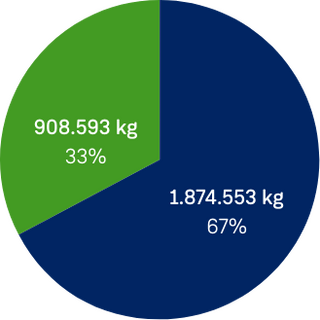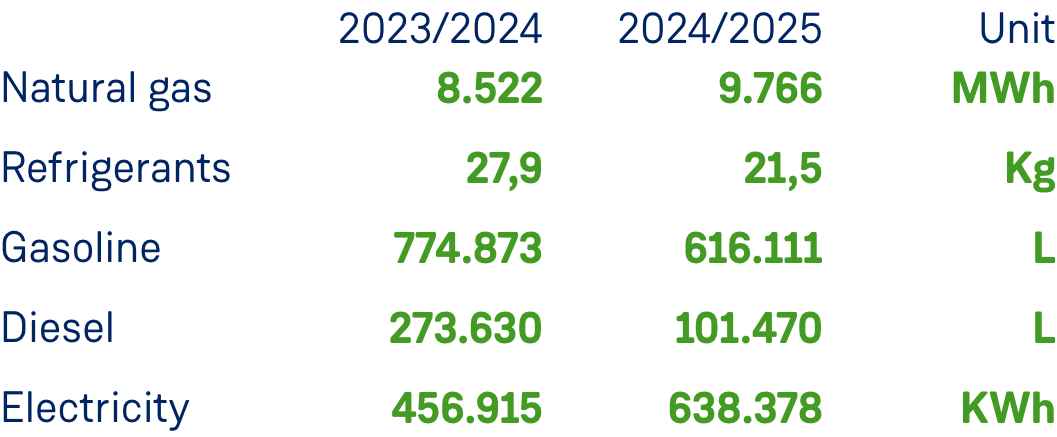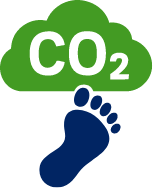FOR OUR
Environment
Brocacef Group aims to emit as little CO₂ as possible by using energy efficiently, reducing waste and optimising recycling, and managing mobility and transport responsibly.
The goal for 2024-2025 was to recycle 25% more waste than in 2021, achieve 10% CO₂ neutrality, and reduce the supply chain footprint by 5% per year.
Results
To measure and report our emissions, we use the Greenhouse Gas (GHG) Protocol. This helps us develop targeted strategies to reduce our ecological footprint and be transparent about our progress towards a more sustainable future. Thanks to more comprehensive and accurate data collection, the quality of our data has improved over the years, providing a better picture of our progress.

Waste
Our goal for 2024-2025 was to recycle 25% of our non-hazardous waste. In this fiscal year, as much as 67% of non-hazardous waste was recycled. This is 44% more than expected and is attributed to the collaboration Brocacef Group has established with waste broker Green Waste. Green Waste helps us improve and make all our waste streams more sustainable.
2024-2025 (total 2.783.146 kg)
Non-hazardous waste, recycled
Non-hazardous waste, not recycled
CO₂ Emissions
The quality of our CO₂ data has steadily improved over the years. Although the differences compared to 2021-2022 may not be fully representative, the data from 2023-2024 and 2024-2025 years provides a more complete and reliable picture, giving us improved insight into our progress and the impact of our sustainability initiatives.
Following route optimisation of our electric vans less electricity was consumed because fewer kilometers were driven. Brocacef Group also downsized its own fleet by 13 vans in 2024-2025 and outsourced to an external carrier, which contributes to route optimisation but also explains the increase in our indirect CO₂ emissions in the supply chain.

Indirect CO₂ emissions (scope 2) are measured in two ways: location-based and market-based. The location-based method looks at the average emissions of the electricity grid, while the market-based method considers specific sources. It can be seen that from the fiscal year 2023-2024, almost no emissions are measured using the market-based method, as Brocacef Group has signed a green contract with European wind.
However, the location-based method does not take this contract into account and assumes the average energy mix in the region where our organisation is situated, resulting in continued emissions being measured.
Fuel Consumption
In 2024-2025, Brocacef Group has made part of its fleet more sustainable. Gasoline and diesel vans have been replaced by electric variants. As a result, 20% less gasoline and 63% less diesel were consumed compared to the previous fiscal year.

Electricity
In the fiscal year 2024-2025, Brocacef Group consumed 4.4% more electricity than in the previous fiscal year. This is partly due to the sustainability of the fleet and the purchase of new electric vehicles.

Other Activities
In addition to our own consumption, we also look at the consumption of our partners in the supply chain, such as third-party transport, purchased goods, and business travel. Third-party transport and business travel have increased substantially. The increase in upstream transport and distribution from 2024-2025 compared to 2023-2024 can be explained by the outsourcing of part of our fleet to an external partner.
Previous years, such as 2021-2022 and 2022-2023, may be insufficiently representative due to incomplete data and/or differently reported data. Despite the increase in business travel, these represent only 0.8% of the total CO₂ emissions within this category in 2024-2025.



